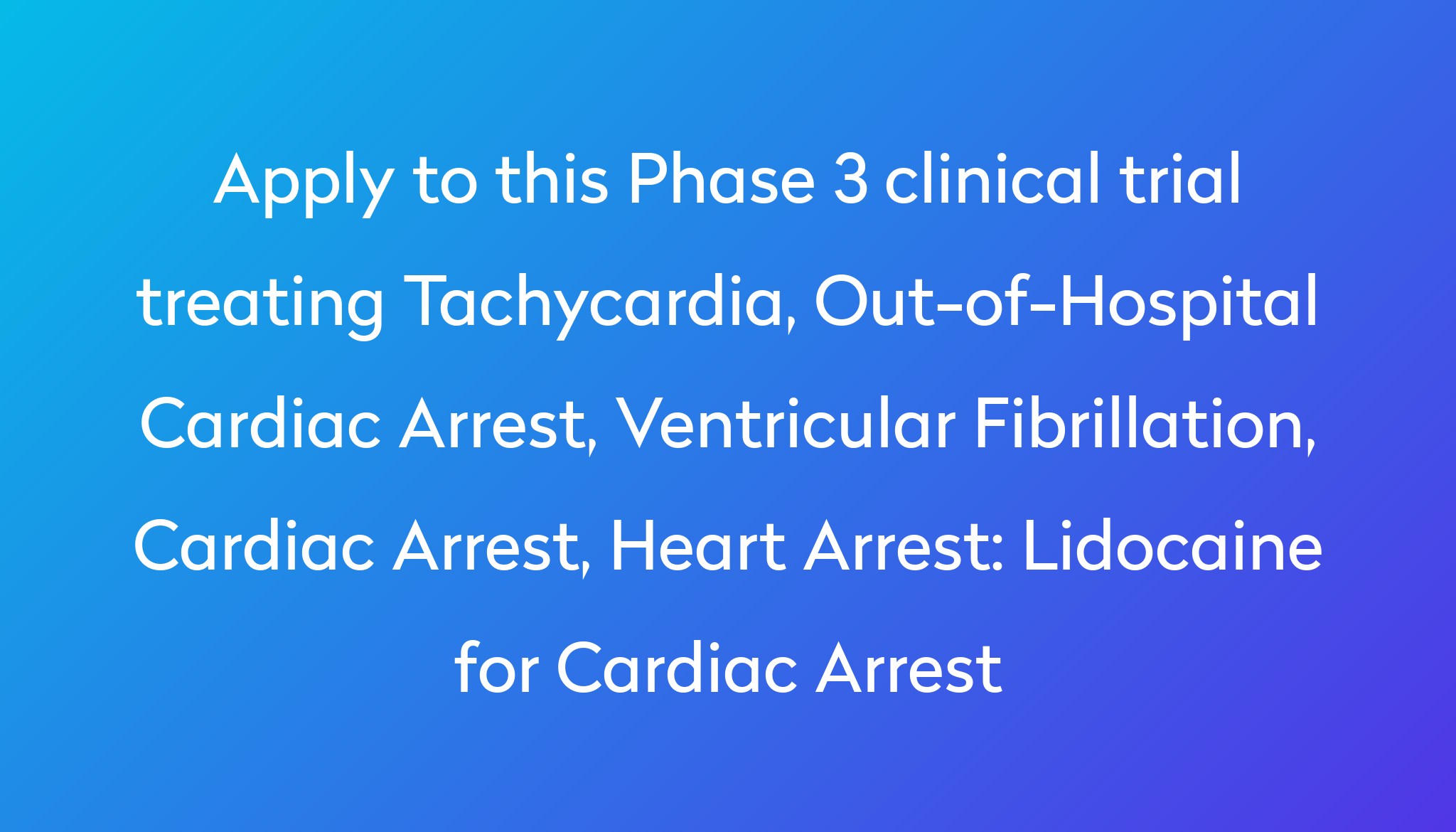First Dose Of Lidocaine In Cardiac Arrest - Web lignocaine (lidocaine) indication: The routine use of magnesium for cardiac arrest is not recommended in adult patients. For shock refractory and/or amiodarone refractory vt/vf. • once advanced airway in place, give 1 breath every 6 seconds.
• once advanced airway in place, give 1 breath every 6 seconds. Web lignocaine (lidocaine) indication: The routine use of magnesium for cardiac arrest is not recommended in adult patients. For shock refractory and/or amiodarone refractory vt/vf.
• once advanced airway in place, give 1 breath every 6 seconds. For shock refractory and/or amiodarone refractory vt/vf. Web lignocaine (lidocaine) indication: The routine use of magnesium for cardiac arrest is not recommended in adult patients.
Lidocaine for Cardiac Arrest Clinical Trial 2022 Power
For shock refractory and/or amiodarone refractory vt/vf. The routine use of magnesium for cardiac arrest is not recommended in adult patients. • once advanced airway in place, give 1 breath every 6 seconds. Web lignocaine (lidocaine) indication:
Amiodarone or Lidocaine for InHospital Cardiac Arrest?
Web lignocaine (lidocaine) indication: • once advanced airway in place, give 1 breath every 6 seconds. For shock refractory and/or amiodarone refractory vt/vf. The routine use of magnesium for cardiac arrest is not recommended in adult patients.
(PDF) associated with amiodarone and lidocaine for the
The routine use of magnesium for cardiac arrest is not recommended in adult patients. For shock refractory and/or amiodarone refractory vt/vf. • once advanced airway in place, give 1 breath every 6 seconds. Web lignocaine (lidocaine) indication:
Antiarrhythmic Drugs in Cardiac Arrest Resuscitation Intravenous
Web lignocaine (lidocaine) indication: • once advanced airway in place, give 1 breath every 6 seconds. The routine use of magnesium for cardiac arrest is not recommended in adult patients. For shock refractory and/or amiodarone refractory vt/vf.
Amiodarone vs Lidocaine for VT/VF inhospital cardiac arrest
• once advanced airway in place, give 1 breath every 6 seconds. For shock refractory and/or amiodarone refractory vt/vf. The routine use of magnesium for cardiac arrest is not recommended in adult patients. Web lignocaine (lidocaine) indication:
What is the Right Response to a Treatment Error Part IV Rogue Medic
The routine use of magnesium for cardiac arrest is not recommended in adult patients. • once advanced airway in place, give 1 breath every 6 seconds. Web lignocaine (lidocaine) indication: For shock refractory and/or amiodarone refractory vt/vf.
For pediatric inhospital cardiac arrest which is betterLidocaine or
Web lignocaine (lidocaine) indication: For shock refractory and/or amiodarone refractory vt/vf. The routine use of magnesium for cardiac arrest is not recommended in adult patients. • once advanced airway in place, give 1 breath every 6 seconds.
Why is lidocaine used in cardiac arrest?
• once advanced airway in place, give 1 breath every 6 seconds. Web lignocaine (lidocaine) indication: For shock refractory and/or amiodarone refractory vt/vf. The routine use of magnesium for cardiac arrest is not recommended in adult patients.
Lidocaine for Neuroprotection during Cardiac Surgery Radius
The routine use of magnesium for cardiac arrest is not recommended in adult patients. • once advanced airway in place, give 1 breath every 6 seconds. For shock refractory and/or amiodarone refractory vt/vf. Web lignocaine (lidocaine) indication:
Figure 1 from Cardiac Arrest Following Liposuction A Case Report of
For shock refractory and/or amiodarone refractory vt/vf. • once advanced airway in place, give 1 breath every 6 seconds. Web lignocaine (lidocaine) indication: The routine use of magnesium for cardiac arrest is not recommended in adult patients.
For Shock Refractory And/Or Amiodarone Refractory Vt/Vf.
• once advanced airway in place, give 1 breath every 6 seconds. The routine use of magnesium for cardiac arrest is not recommended in adult patients. Web lignocaine (lidocaine) indication:







